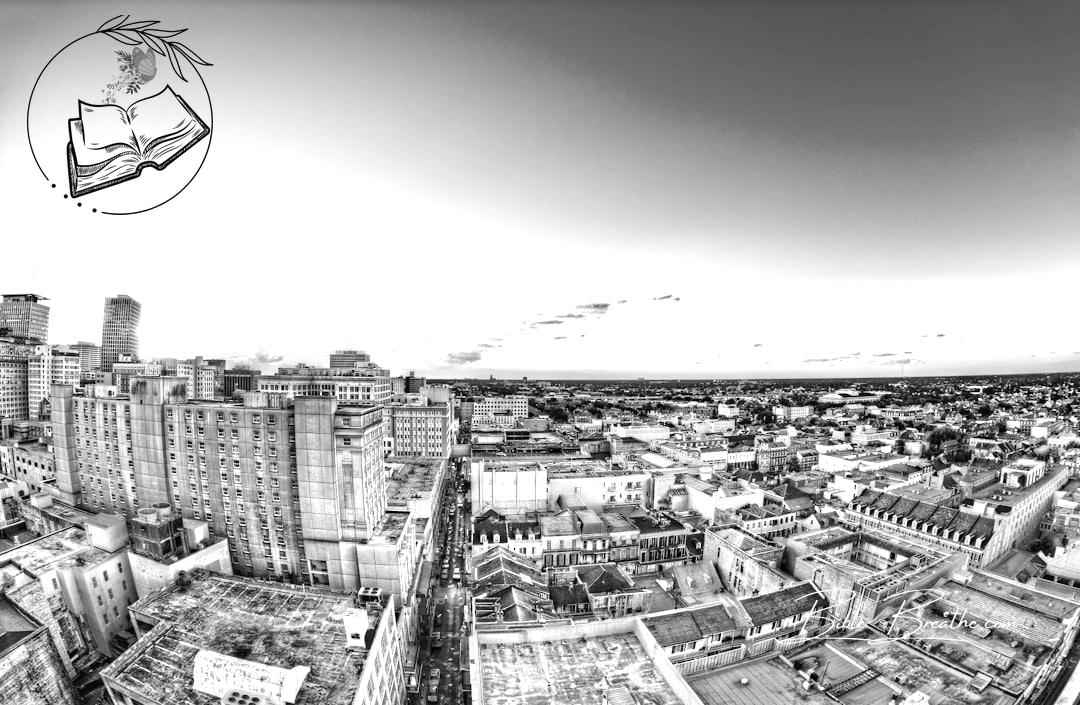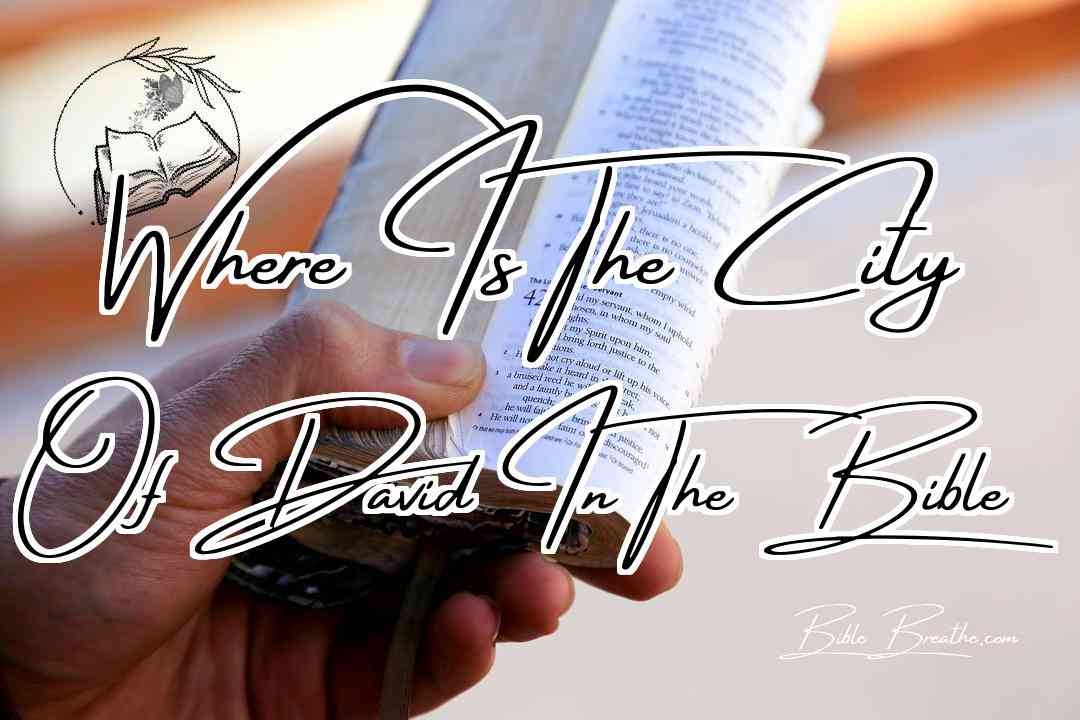I still get chills thinking about tracing the path of King David – the man who managed to unite all these different tribes and set up a kingdom that lasted for ages. Where’d he reign from, though? It’s kinda weird – the Bible’s like, super specific about this “City of David” – but never provides a solid address. Sometime or another, I got real curious about it and looked it up, found out the place holds some serious significance for biblical history.
Top 5 Bible Verses About Where Is The City Of David In The Bible
I was digging through the Bible, and I stumbled upon these super relevant passages that, honestly, cleared up a lot of questions I had about the City of David. For real, taking a gander at these verses might give you a way better understanding of it all – they did for me, at least! They offer some pretty solid tips that, I mean, aren’t exactly definitive or anything, but can still kinda help get your bearings.

Picture by BibleBreathe.com about Where Is The City Of David In The Bible
My Take on the City of David
Getting to Know the City of David
I found myself standing on this hill, staring down at Jerusalem, and my mind starts to wander – what’s the deal with the City of David, anyway? King David, this biblical dude I’ve always been kinda fascinated with, he used to run the show there.
So the City of David, it’s like… 12 acres or something, just chillin’ south of the Old City in Jerusalem. They also call it Zion.
It’s where David, who started out as some young sheep herder, became the king of Israel and brought the Ark of the Covenant, which pretty much sealed the city’s spot in biblical history.
City of David in the Old Testament
The Bible’s all,
“And the king and his men went to Jerusalem unto the Jebusites, the inhabitants of the land: which spake unto David, saying, Except thou take away the blind and the lame, thou shalt not come in hither: thinking, David cannot come in hither.” (2 Samuel 5:6, KJV).
That verse kinda gives us a taste of how important the City of David was back in the Old Testament days – a spot where military stuff went down, but also spiritual things.
When I’m reading through the Old Testament, I keep noticing the City of David popping up all over the place, from 1 Samuel to 1 Kings and even the Psalms – I mean, it’s definitely a crucial part of the whole biblical story.
Why City of David Matters
To me, the City of David’s all about this underdog (David) becoming the hero of the story, beating the odds – kinda like that one story of him taking down Goliath.
That archaeologist dude Ronny Reich, he’s like, “The City of David is one of the most excavated sites in the world” – which tells you something about how big of a deal it is.
For me, the City of David’s more than just a spot that shows up in the Bible – it’s this reminder of how faith ties in with history and how God, or whatever higher power you believe in, is always working behind the scenes.
That Winston Churchill guy, he once said, “History will be kind to me for I intend to write it” – I mean, the City of David’s one of those places where history and faith collide, where what went down in the past kinda shapes how we see things now and in the future.
Location of the City of David
I’m still going over it all in my head – me standing on them Southern Steps of the Temple Mount, and this question just wouldn’t quit bugging me – where in the Bible is the City of David located?
The City of David in Jerusalem
Now I’d sort of taken for granted, I guess, that the City of David was someway linked with Jerusalem. I’d just not ever taken a closer look into, you know, where exactly. Like an actual location.
I mean, City of David’s in Jerusalem, I reckon right outside the walls of the Old City and pretty directly south of the Temple Mount.
The more I studied it, David’s basically immediately, right after becoming the king, this ends up being his little settlement and area.
The Bible tells us,
“And the king and his men went to Jerusalem unto the Jebusites, the inhabitants of the land: which spake unto David, saying, Except thou take away the blind and the lame, thou shalt not come in hither: thinking, David cannot come in hither. Nevertheless David took the strong hold of Zion: the same is the city of David” (2 Samuel 5:6-7, KJV).
That still seems so surreal. Someone as mighty as David, I’m reminded that he did struggle at times with forces working against him too.
Archaeological evidence for the City of David
During my day of exploring these actual streets in City of David – sometimes these passages are just so completely tiny, by the way – well, the amount of archaeological stuff left lying around…truly does show my faith system tells me – it’s also good history.
Here you got that ancient old Jebus being discovered. Now also you have so many great finds like that Siloam Tunnel I kept reading so much about, and it only started again in…past few decades, when folks also finally decided they should also go and fully investigate round where that truly massive, Pool of Siloam used to sit.
So see to my idea, all this stuff has proven it is probably fully and remarkably plausible, that when the pages say such ‘n such it isn’t all some conjuring trick out some dusty old texts compiled from far and wide – good and faithful texts.
The relationship between the City of David and the Temple Mount
We’re all just totally so lost without how the City and that other Mount works from any even fair acquaintance of any of Bible at all.
Our God even back as father Solomon took up to constructing that massive and important First ever manmade “Place of Holy assembly “. Of and to Jesus very clearly that whole line to end all talk, was only a part He goes stomping amongst this holy city, talking again another day to whom did congregate and not least shouting some amount of his ‘my living, spirit is one all.’ But nevermore it has to seem pretty evident though how as a nation of ‘Christian but also Jews ‘how Jerusalem’s kept playing much the largest share.
Not in least how He then moved from that and how His idea was clearly his body just being laid in Temple already destroyed yet could once stand.
Looking closely though its more.
One very noted master and music poet was inspired enough at on part to tell
“If I forget thee, O Jerusalem, let my right hand forget her cunning” (Psalm 137:5, KJV).
It’s no news, just the old familiar line and memory to my own, to give a full picture here in those small and less considered meanings being those also what can give our more open times.
Biblical References to the City of David

Photo modified by BibleBreathe.com. Original photo by Scott Webb on Unsplash
The City of David in the books of Samuel and Kings
I been reading the Bible a lot lately, and the City of David keeps popping up – it’s pretty clear this place was a big deal back in the day. If you flip through the books of Samuel and Kings, you get all these snippets of the city’s history.
First off, the City of David gets a mention in 2 Samuel 5:7, where David grabs the Jebusite fortress and makes it his own capital. This was some smart move on his part, since it marked the start of a whole new era for the Israelites.
“Nevertheless David took the strong hold of Zion: the same is the city of David.” (2 Samuel 5:7, KJV).
You gotta think, though – this one verse sorta sums up how much the city meant to David: it was his claim to fame, and all that.
The City of David in the Psalms and Prophets
Now if you take a look at the Psalms and Prophets, they give you another angle on the City of David too. In Psalm 101:8, David is all, “I wanna rid this place of the bad guys,” stressing that the city needs some serious cleanliness – morally speaking.
“I will early destroy all the wicked of the land; that I may cut off all wicked doers from the city of the Lord.” (Psalm 101:8, KJV).
But then there’s the prophets – guys like Isaiah, who’s all teary-eyed about the city getting trashed, yet who still thinks maybe, just maybe, it’ll all get fixed someday. Check out Isaiah 22:9-10.
The significance of the City of David in biblical prophecy
I mean, what’s the big deal with the City of David anyway? Is it just a map reference, or is it something more? Thing is, this city mattered – still matters – ’cause it’s tied up with God’s promise to David. In other words, the City of David is kinda a foreshadowing of Jesus.
And lo and behold, come New Testament times, folks start yelling, “Hosanna to the Son of David!” whenever Jesus walks by.
“And the multitudes that went before, and that followed, cried, saying, Hosanna to the son of David: Blessed is he that cometh in the name of the Lord; Hosanna in the highest.” (Matthew 21:9, KJV).
Ultimately, I reckon the City of David is just one huge reminder: God keeps His promises, no matter how cray the world gets. So, it’s pretty encouraging to know that even in the darkest times, you can stick to hope – just as folks have done since the City of David was a thing.
The City of David back in King David’s Time
How King David Took Over Jerusalem
I gotta say, the first time I read about King David’s takeover of Jerusalem, it was like something outta a film – all that fighting, scheming, and winning in the end. The Bible’s got this to say about it:
“And the king and his men went to Jerusalem unto the Jebusites, the inhabitants of the land: which spake unto David, saying, Except thou take away the blind and the lame, thou shalt not come in hither: thinking, David cannot come in hither.” (2 Samuel 5:6, KJV).
David wasn’t the kinda guy to back down from a challenge, no sir. He stormed that city and made it his own.
Setting Up the City of David as Israel’s Capital
Looking back, I figure King David’s decision to make Jerusalem the capital of Israel was pure strategic genius. I mean, the City of David, aka Zion, was like a fortress – up on a hill, super secure for the king and his people. According to the Bible,
“So David dwelt in the fort, and called it the city of David. And David built round about from Millo and inward.” (2 Samuel 5:9, KJV).
Next thing you know, the City of David’s the hub of Israel’s politics, economy, and worship scene.
The Palace and the Temple: King David’s Big Building Project
When I think about all the building King David did in the City of David, what strikes me is his passion for making it all beautiful and honoring God at the same time. I mean, the palace and the temple weren’t just, like, buildings – they stood for God’s presence in Israel’s life. The Bible says,
“And Hiram king of Tyre sent messengers to David, and cedar trees, and carpenters, and masons: and they built David an house.” (2 Samuel 5:11, KJV).
Now, where’s the City of David in the Bible, you ask? Well, it’s not just some random place – it’s like, a symbol of God’s promise to his people, reminding us about King David’s leadership and all that.
My Time in the City of David
Standing in the City of David, I couldn’t shake off the feeling that I was, like, literally walking on history or something.
What I Learnt About Archaeological Excavations in the City of David
So the City of David, which is in Jerusalem by the way, it’s like this treasure chest of cool archaeological stuff. People have been digging around since, oh, the 19th century, and let me tell you, they’ve found some pretty mind-blowing things – like, have you heard of the Jebusite city? Yeah, they found remnants of that. And King David’s palace? Yep, that too. Each time they dig deeper, it’s like another story just unfolds.
The Big Discoveries in the City of David
Hezekiah’s Tunnel, man – that’s like one of the biggest discoveries they made here. I mean, we’re talking 1,750 feet of tunnel that’s been around since the 8th century BC. Talk about some serious skills, right? The ancient Israelites were, like, super talented engineers. And the Bible mentions it too –
“And the rest of the acts of Hezekiah, and all his might, and how he made a pool, and a conduit, and brought water into the city, are they not written in the book of the chronicles of the kings of Judah?” (2 Kings 20:20, KJV).
I mean, it’s pretty cool to think about how they managed to get water into the city back then.
How Archaeology Changed What We Know About the City of David
All the discoveries they’ve made in the City of David, it’s like, totally changed our understanding of this place. The more we find out, the more it’s like…Have you ever read the Bible and wondered if all those stories really happened? And then you come here, and it’s like, yeah, this stuff is real. This city’s more than just old buildings and stones; it’s like this…this window that lets us peek into the past, see what people’s lives were like way back when. That Winston Churchill quote always comes to mind –
“The farther backward you can look, the farther forward you can see.”
Looking back at this city’s history, you start to get why it matters.
The City of David Today
Uncovering the Ancient City
I’m still reeling from my visit to the City of David. You see, it’s nestled in the southeastern part of Jerusalem’s Old City – gotta pass by the Western Wall and the Dung Gate to get there. That narrow ridge? Used to be where the Jebusite city was before David conquered it, back in the day.
It’s kinda mind-boggling how the City of David’s current layout still points to its ancient roots. Archaeologists have dug up old walls and the remains of the city’s water system, which King Hezekiah built. I mean, can you imagine building something that’d last centuries?
Walking in the Footsteps of History
Folks flock to the City of David for a taste of the past, but also, it’s a straight-up awesome place to explore. The ancient streets are still there, and you can practically picture how things used to be. Oh, and then there’s the famous water tunnel – Hezekiah’s Tunnel – constructed around 8th century BC.
Like the Bible says,
“This same Hezekiah also stopped the upper watercourse of Gihon, and brought it straight down to the west side of the city of David.” (2 Chronicles 32:30, KJV).
This tunnel is some next-level engineering stuff, a real testament to those ancient Israelites’ ingenuity.
The Ongoing Significance of the City of David
So yeah, the City of David’s not just about history and tourism – there’s some real deep meaning to this place, especially if you’re into spirituality. King David’s legacy lives on, you see, and it all connects back to the City. Take, for instance, that time the prophet Isaiah said:
“For a child is born to us, a son is given to us; and the government shall be upon his shoulder: and his name shall be called Wonderful, Counsellor, The mighty God, The everlasting Father, The Prince of Peace.” (Isaiah 9:6, KJV).
Now, that was foretelling Jesus Christ’s arrival – a direct descendant of King David, by the way. The City of David kinda represents the realization of this prophecy, you feel? It’s relevant even today.
What Do You Think?
What’s your personal reflection on this passage? Let us know in the comments! Your insights might help others connect with the verse in a meaningful way.
If this post resonated with you, share it and explore additional insights at BibleBreathe.com!

Photo modified by BibleBreathe.com. Original photo on Unsplash.
Frequently Asked Questions About Where Is The City Of David In The Bible
What is the City of David in the Bible and where is it located?
Personally, I find the City of David to be super important – it’s basically where Jerusalem first started, over by the Temple Mount. That’s where King David set up shop, and we’re still uncovering new stuff about it today in Israel.
Is the City of David the same as Jerusalem in the Bible?
To me, the City of David is like the old town of Jerusalem. King David started his kingdom there, so while it’s part of Jerusalem, they aren’t one and the same thing – think of it like a historic neighborhood within the city limits.
What archaeological discoveries have been made in the City of David mentioned in the Bible?
I’ve always been kinda obsessed with the City of David, and archaeologists have actually found some pretty cool stuff there. Like, they unearthed what they think is King David’s palace, and this crazy Stepped Stone Structure, not to mention the Siloam Tunnel, which lines up with what the Bible says – it’s pretty mind-blowing, if you ask me.
Matt Turner
I’m Matt, and I love breaking down Bible verses in a way that’s easy to understand and apply to everyday life. My goal is to help you connect with God’s Word and find practical ways to live it out. Whether you’re new to the Bible or just looking for some fresh insights, I’m here to walk with you and share what I’ve learned along the way.

